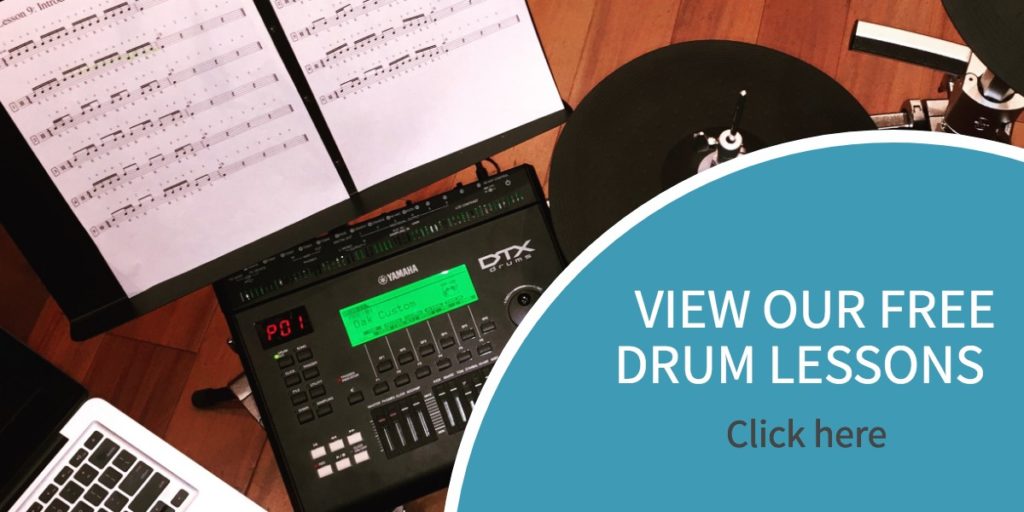Electronic drum sets have really come a long way. Ten years ago, a handful of drum companies had a monopoly on the market due to high development, manufacturing and distribution costs, and it seemed that even starter sets were beyond the budget of most aspiring drummers.
When newbie drummers buy their first set, they are generally not looking to spend thousands of dollars. Most want to pitch in at the lower end of the cost spectrum and test the water, and their commitment to the hobby first. For many years, this was unattainable with electronic drums, but with the internet facilitating more aggressive pricing, digital learning, and a simple practical need to keep the volume down; electronic drums have become big business for the drum manufacturers, and the retail drum market as a whole.
Helpful related articles:
Electronic vs Acoustic drums – choose what’s right for you.
Sound Control – Practical means of controlling drum set volume.
Buying drum sets online – The five common mistakes to avoid.
Whether you are picking up a basic starter package at a consumer electrical store or buying a high-end model online or at a music retailer – there is more brand and model choice then ever before, and that has to be a good thing for hobbyist drummers.
Are they any good? We think so, but you really need to choose what’s right for you. To help, we have compiled this list of the top 5 Pros and Cons of electronic drums.
5 Pros of electronic Drum Sets.
Number 1. Sound Control.
Without a doubt, volume is the main concern for most aspiring drummers, and for those in the same household. If this is the case for you, then electronic drums might be the way to go. Simply plug your headphones in to the module, or practice at lower volumes through a monitor or speaker system. Not only will your family and neighbors thank you for it, but it will greatly increase your available practice hours.
Number 2. Mix-in music and play along!
One of the greatest feelings for beginner and hobbyist drummers is the ability to play along to your favorite music. It’s a lot of fun, and it can help keep you motivated through some of the more challenging times in your learning experience. It can be difficult playing along to music with acoustic drums because it is hard to hear the music over the volume of your drums – unless you crank it way up. Or, you find yourself playing quietly to compensate, and that’s not ideal either. Headphones are fine, but it’s almost impossible to get a good balance of drums and music. Most electronic drum sets have a mix-in function on the module so that you can play along to music, while hearing your drum part, and all at a sensible mix.
Number 3. On-board metronome.
Due to the volume, it’s very difficult to play along with a metronome when you are playing an acoustic drum set. Since metronomes are essential tools for developing time keeping, this can be a problem. You simply cannot hear a metronome effectively without headphones, and when using headphones, the metronome still needs to be at a high volume which can be uncomfortable. Sure, you could follow the flashing light that most metronomes give you, but it’s another distraction and is not ideal. With electronic drums, you can adjust your drum set and metronome volume so that they work in harmony, giving you the freedom to focus on your playing.
Number 4. Multiple drum sets and play along songs.
Depending on the model of electronic drum set that you choose, you may have a number of different pre-set drum kits (some of which may be customizable), and play along songs. The latter can be particularly good fun because they sometimes have the option of muting the original drum track, and playing with, or without a click track. Naturally, the more advanced (and thus, more expensive) drum sets offer the widest spectrum of pre-set drum kits, editing and other customization. The other noteworthy point is that the drums and cymbal sounds are better today then ever before, with higher-end sets even providing snare drum buzz and tom decay. Drum Ambition members can check out our glossary for an explanation of these terms.
Number 5. Space saving.
As the drums and cymbals are typically undersized and mounted from a rack system, there is a certain degree of space saved when comparing directly with an acoustic drum set. The bass drum on an acoustic drum set is responsible for a lot of the space needed, often taking 16-20+ inches in depth before you even add a snare drum and a seat behind. With the additional clutter of tripod legs for hefty cymbal stands, acoustic drums will eat up more bedroom or practice room space then their electronic counterparts. With that said, some high-end electronic sets are becoming larger with more realistic sized pads and cymbals, and can take up a comparable amount of space.
5 Cons of Electronic Drum Sets.
Number 1. Feel.
No matter how good electronic drums have become, they simply do not feel the same, or have the same response as a real drum or cymbal. This may or may not be an issue for you, but those beginners who rarely play acoustic drums can find it a tough transition. Acoustics drums are extremely responsive and articulate, and learning to control these nuances is all part of building drum set control, and becoming a musical drummer. If you play solely on electronic drums, you may be missing out on the authentic experience of playing the instrument. Many are willing to forgo this for the primary benefits listed above. Electronic drums allow you to get away with certain things that acoustic drums make you work harder for – such as drum rolls and dynamics.
Number 2. Positioning.
Given as most of the pads and cymbals on electronic drums are undersized and rack mounted, they can often be difficult to position. The positioning of your drums is very important, as developing good technique and control depends in part on an efficient and ergonomic set up. Having drums and cymbals placed at awkward heights or angles can be difficult to play, and force you into bad habits.
Number 3. Portability.
If you are looking for a low maintenance instrument to carry around to rehearsals and shows, then you might want to consider the guitar! Drums, and all of the hardware, pedals, cymbals and stands that we have to hike around can be quite cumbersome. We do it because we love the instrument, and because it’s well worth it! With electronic drums, you have to throw a rack, wires (often, lots of wires), and a monitor/speaker system in to the mix.
Number 4. Cost.
Although, as we have discussed, the price point for electronic drums has never been so reasonable as it is today, the fact is that high-end drums are still very expensive. If you want electronic drums that have the most capability within the module, larger sized pads and cymbals, and as close to a “real feel” as possible, then you are looking at $3500+.
Number 5. They are not acoustic drums.
This seems like an obvious point, but as I have mentioned in other articles, nothing beats the feeling of playing a “real” acoustic drum set. The reality, however, is that acoustic drums can be far from practical in many situations, and you must decide what is right for you, based on your own circumstances. Although it’s tempting to shop online and hope for the best, I would recommend visiting a specialist music store, talking with sales professionals, and most of all, trying both options for yourself. Remember, if you decide to go down the acoustic drum route, there are plenty of good solutions for noise reduction, if this is your primary concern.
If you have any questions relating to this article, please feel free to email support@drumambition.com.
Simon DasGupta.


